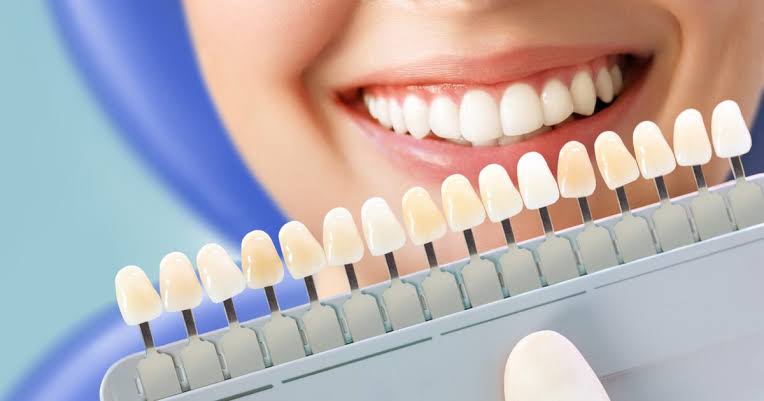Teeth whitening is a popular cosmetic dental procedure aimed at improving the color and brightness of teeth that have become discolored or stained over time. It’s a non-invasive and relatively simple procedure that can significantly enhance the appearance of a person’s smile. Here are the main aspects of teeth whitening:
- Types of Teeth Whitening:
- In-Office Whitening: This is a professional procedure performed by a dentist in their office. It involves applying a high-concentration whitening gel to the teeth and often using a special light or laser to enhance the whitening process.
- At-Home Whitening: Dentists may provide custom-made trays and a lower concentration of whitening gel for use at home. Patients wear these trays filled with the gel for a prescribed amount of time each day until they achieve the desired level of whitening.
- Over-the-Counter Whitening Products: These include whitening toothpaste, strips, gels, and mouth rinses available without a prescription. However, their effectiveness may vary, and they typically contain lower concentrations of the active whitening agent compared to professional products.
- Whitening Agents:
- Hydrogen Peroxide or Carbamide Peroxide: These are the most common whitening agents used in teeth whitening products. They penetrate the tooth enamel to break down and remove stains, resulting in a whiter appearance.
- Procedure:
- For in-office whitening, the dentist will first protect the gums and soft tissues, then apply the whitening gel to the teeth. A special light or laser may be used to activate the gel and accelerate the whitening process.
- For at-home whitening, the dentist will take impressions of your teeth to create custom-fitted trays. They’ll provide instructions on how to use the trays and the prescribed whitening gel.
- Duration and Results:
- In-office whitening typically takes about 1-2 hours, with noticeable results after a single session. At-home whitening may take a few weeks to achieve the desired results, depending on the concentration of the whitening gel and how consistently you use it.
- Maintenance and Care:
- To maintain the results of teeth whitening, it’s important to practice good oral hygiene, avoid foods and beverages that can stain the teeth, and undergo periodic touch-up treatments as recommended by your dentist.
- Considerations and Risks:
- Teeth whitening is generally safe and well-tolerated, but some people may experience temporary tooth sensitivity or gum irritation.
- Not everyone is a suitable candidate for teeth whitening, especially those with certain dental conditions or restorations. It’s important to consult with a dentist to determine the best approach for your individual situation.
Always consult with a dental professional before undergoing any teeth whitening procedure to ensure it’s safe and appropriate for your dental health.


